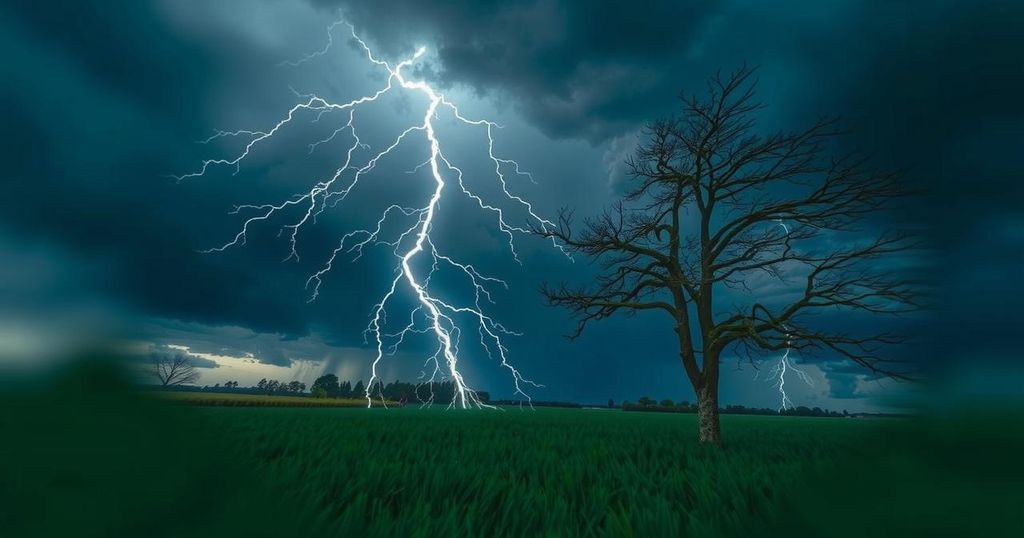Hurricane Helene has intensified concerns over rising storm activity this season, with NOAA forecasting up to 24 named storms and at least seven likely to become major hurricanes. As ocean temperatures climb due to climate change, experts emphasize the crucial need for families to prepare for severe weather and heed warnings from meteorologists to ensure safety during storms.
In light of recent devastating storms, including Hurricane Helene, which has led to rising fatalities and extensive damage across the southern regions of the United States, residents are urged to prepare themselves for future emergencies. As additional storms are developing strength across the Atlantic, the National Oceanic and Atmospheric Administration (NOAA) has projected that this hurricane season could see as many as 24 named storms, with predictions of at least seven intensifying into major hurricanes. Although there have already been eight named storms recorded this season, experts emphasize that the urgency to prepare remains critical, with two months left in the hurricane season. Hurricane Beryl made headlines this July as the earliest recorded category five hurricane in the Atlantic, highlighting the increasing frequency and intensity of such storms. Climate change continues to exacerbate these conditions, leading to warmer ocean temperatures, which subsequently fuel harsher hurricanes. University of Rhode Island Oceanographer Isaac Ginis explains that regardless of immediate actions to halt carbon dioxide emissions, the climate will take approximately 10 to 15 years to revert to stable conditions, and ongoing emissions could prolong this issue for centuries. Meteorologists are now utilizing advanced technology to enhance forecasting accuracy, allowing for better predictions of storm intensity and wind speed. Ginis notes that while a focus is often placed on higher category hurricanes, it is crucial to remain vigilant about slower-moving storms that may cause severe flooding. He cautions, “Six inches of water can knock down an adult or two feet of moving water can essentially sweep away a vehicle.” To ensure safety during a storm, it is essential to prepare adequately beforehand, remain indoors during the event, and have sufficient supplies on hand post-storm. Ginis stresses that there is no justification for fatalities during storms in today’s age; adherence to warnings and guidance from meteorological experts is imperative. The hurricane season continues until November 30th, and individuals are encouraged to visit http://www.ready.gov/ for advice on safeguarding their homes and businesses against impending storms. Additionally, downloading the FEMA application is recommended for personalized disaster resources that enhance preparedness for natural disasters.
The ongoing threat of hurricanes is exacerbated by climate change, which contributes to increased ocean temperatures, essentially creating favorable conditions for powerful storms. Recent hurricanes, notably Hurricane Helene and the historic Hurricane Beryl, have highlighted the urgent need for individuals and communities to understand the risks associated with these extreme weather events. The dedication to advanced forecasting techniques is a response to the growing unpredictability and intensity of hurricanes, as scientists and meteorologists strive to protect lives through improved predictions and public education. The growing trend toward stronger and potentially more frequent hurricanes necessitates a proactive approach to disaster preparedness, which includes not only physical readiness but also awareness of the critical information shared by meteorological professionals.
In conclusion, as we face an unprecedented hurricane season, it is vital for families to understand the potential impacts of severe storms. With warnings from experts regarding the increasing intensity of hurricanes and the importance of preparation, individuals must take proactive measures to safeguard themselves and their loved ones. By adhering to recommendations from authorities, utilizing available resources, and maintaining readiness throughout the hurricane season, communities can significantly mitigate risks associated with these natural disasters.
Original Source: www.walb.com






